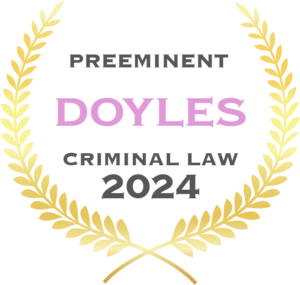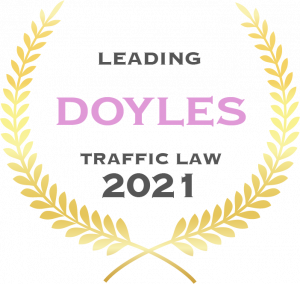Understanding Simple Affray vs Simple Assault
As affray and common assault are among the most common criminal offences recorded in NSW, it is imperative that individuals understand what constitutes these crimes, the difference between them, and any potential penalties.
What’s the Difference Between Assault and Simple Assault? Affray and Simple Affray?
In NSW, assault refers to a range of offences outlined in the Crimes Act 1900 (NSW). Common assault is the least serious of these as its elements do not require someone to be physically injured.
There is only one offence of affray outlined in NSW legislation. Riot is a similar offence elementally but requires 12 or more people to be involved. This distinguishes it from affray which need only concern 1 person.
Affray and common assault are very similar offences, but affray is treated more seriously as it is considered an offence against the public order as opposed to an individual. An act will constitute assault if it causes one other person to apprehend immediate and unlawful violence. Affray, on the other hand, is established when a person uses or threatens unlawful violence in such a way that would cause a third person to fear for their safety.
Further, words alone will not constitute affray, but they may amount to common assault.
Definition of Simple Affray
The offence of affray is found in s93C of the Crimes Act 1900 (NSW) which states:- A person who uses or threatens unlawful violence towards another and whose conduct is such as would cause a person of reasonable firmness present at the scene to fear for his or her personal safety is guilty of affray and liable to imprisonment for 10 years.
- If 2 or more persons use or threaten the unlawful violence, it is the conduct of them taken together that must be considered for the purposes of subsection (1).
- For the purposes of this section, a threat cannot be made by the use of words alone.
- No person of reasonable firmness need actually be, or be likely to be, present at the scene.
- Affray may be committed in private as well as in public places.
While the definition of affray means that often incidents will occur in a public place and involve more than one person, this will not always be the case according to subsections 4 and 5. The essential element is that a third party, whether or not they are present, would fear for their own safety.
“A person of reasonable firmness” is not defined in legislation but is generally accepted to refer to an ordinary person who is neither unusually courageous nor fearful.
Examples of Simple Affray Cases
Examples of actions that would constitute a case of affray include:
- Threatening violence against a co-worker;
- Fighting in a pub or bar;
- Being involved in a violent public demonstration or protest;
- Participating in road rage; and
- Partaking in disorderly public behaviour that intimidates others.
Legal Consequences of Simple Affray
Under the Criminal Procedure Act 1986 (NSW), affray is considered a “Table 1 offence”. This means that it is an indictable offence that will be dealt with summarily (that is, in the Local Court) unless the prosecutor or the person charged elects otherwise.
The maximum term of imprisonment that the Local Court may impose for affray is 2 years, and the maximum fine that may be imposed is 100 penalty units (currently $11,000).
When dealt with on indictment, affray carries a maximum penalty of 10 years imprisonment.
These penalties are subject to the details of the offence and the subsequent discretion of the Court. As such, it is possible to be sentenced in one of the following ways:
- Section 10 dismissal;
- Conditional Release Order;
- Community Corrections Order; or
- Intensive Corrections Order
Prevalence and Occurrence of Simple Affray
The NSW Bureau of Crimes Statistics and Research (BOCSAR) releases quarterly updates of recorded crime statistics that give an indication of the prevalence and occurrence of criminal offences. While it does not display statistics for affray specifically, incidents of “Riot and affray” are included within the BOCSAR offence of “Intimidation, stalking and harassment”.
Offences of intimidation, stalking and harassment are some of the most prevalent per year with 44,786 incidents recorded in the 12 months from June 2022 to June 2023. This demonstrates an upward trend of this kind of offence with an annual average increase of 9.1% from the previous year, and 7.3% from 5 years ago.
While affray is only one of a collection of crimes that BOCSAR encapsulates under the banner of intimidation, stalking and harassment, the overall trend illustrates that these kinds of offences are prevalent within the state.
Definition of Simple Assault
Section 61 of the Crimes Act 1900 (NSW) states that: “Whosoever assaults any person, although not occasioning actual bodily harm, shall be liable to imprisonment for two years.”
An assault is any act by which a person intentionally, or recklessly, causes another person to apprehend immediate and unlawful violence. As such, common assault will not necessarily involve any physical contact with the person assaulted. Rather, the apprehension of injury or the instillation of fear is the key element.
If an assault produces actual bodily harm, it will no longer constitute common assault and instead escalate to the offence of “assault occasioning actual bodily harm” found in s59 of the Crimes Act 1900 (NSW). “Actual bodily harm” is not defined in the Act but is regularly referred to as harm that is “more than merely transient or fleeting.” Examples include scratches, bruises, and serious psychological injury.
Because an assault that causes an injury is a separate and more serious offence, a common assault will not be considered less serious if it does not result in an injury.
Examples of Simple Assault Cases
Examples of acts which would amount to common assault are:
- Raising a hand at someone in a menacing fashion;
- Striking at a person with a fist or object, regardless of whether contact is made;
- Throwing an object with the intention to strike someone;
- Striking a horse causing its rider to fall off;
- Unlawful imprisonment; and
- Any other act indicating an intention to use violence against someone else.
Legal Consequences of Simple Assault
Common assault is known as a “Table 2 offence” under the Criminal Procedure Act 1986 (NSW), which means it will be dealt with summarily (in the Local Court) unless the prosecutor elects otherwise.
Common assault carries a maximum penalty of 2 years imprisonment. The maximum fine that the Local Court may impose is 50 penalty units, which is currently $5,500.
As with affray, upon a conviction of common assault the Court has discretion to choose one of the alternative sentencing options, depending upon the circumstances of the case.
Prevalence and Occurrence of Simple Assault
According to BOCSAR, the number of non-domestic violence related assault offences in NSW has remained stable over the past five years with an average of about 32,000 incidents per year. This is an increase of 16.2% from last year, however.
With respect to domestic violence related assault offences, the number of incidents has seen an annual percentage increase of 3.2% from five years ago, and an increase of 8.7% from last year. July 2022 to June 2023 saw NSW record 34,700 incidents of this kind.
While not indicative of common assault alone, these statistics demonstrate that occurrences of assault in NSW are some of the most prevalent offences in the state, with “Malicious damage to property” the only other major offence showing a greater number of annual incidents.
What is Worse: Assault or Affray?
Having regard to the maximum penalties set out in the legislation, affray is treated more seriously than common assault. This is because affray is viewed as being an offence against the public order, while assault is considered an offence against an individual. Affray entails a maximum penalty of 10 years, while assault carries one of 2 years. As a Table 1 offence, affray also attracts a potential maximum fine of $11,000 while assault, a Table 2 offence, is liable for a $5,500 fine.
More serious forms of assault under the Crimes Act 1900 (NSW) attract higher penalties than affray. Charges of reckless wounding and inflicting grievous bodily harm carry penalties ranging from 10 years to 14 years depending on the details, while wound or inflict grievous bodily harm with intent and assault causing death carry a maximum penalty of 25 years imprisonment.
Key Takeaways
- Simple affray and simple assault are common offenses in NSW, distinguished by their impact on public order and individuals, respectively.
- Affray involves using or threatening unlawful violence to cause fear for someone's safety, potentially leading to a maximum of 10 years imprisonment.
- Simple assault refers to actions causing another to apprehend immediate violence, with a maximum penalty of 2 years.
- Affray is considered more serious, reflecting its broader impact on public safety, while both offenses have specific legal consequences and are prevalent in NSW.
Are You Being Charged with Simple Assault or Affray?
As such prevalent offences against the public and individuals, assault and affray are treated seriously by the NSW Courts.
If you are being charged with a criminal offence in NSW, it is vital that you seek legal advice and legal representation. An experienced criminal defence lawyer will be able to advise you on how to proceed and assist you through every step of the process. Contact our expert Criminal Defence Lawyers now.
Written By

James Janke
James Janke is founding partner at Hamilton Janke Lawyers, and has more then decade of experience as a Criminal Defence Lawyer. Admitted to both the Supreme Court of New South Wales and High Court of Australia




